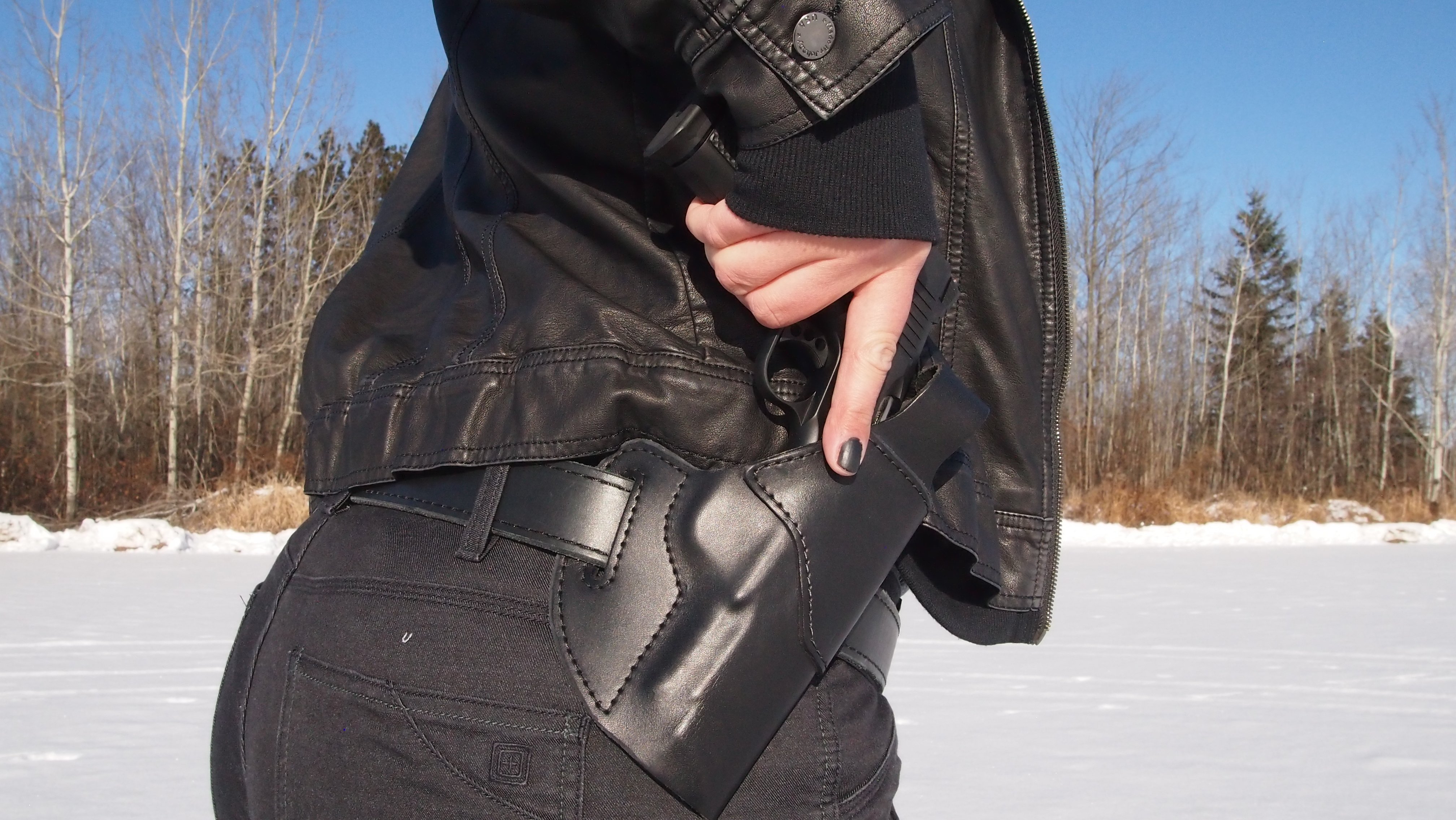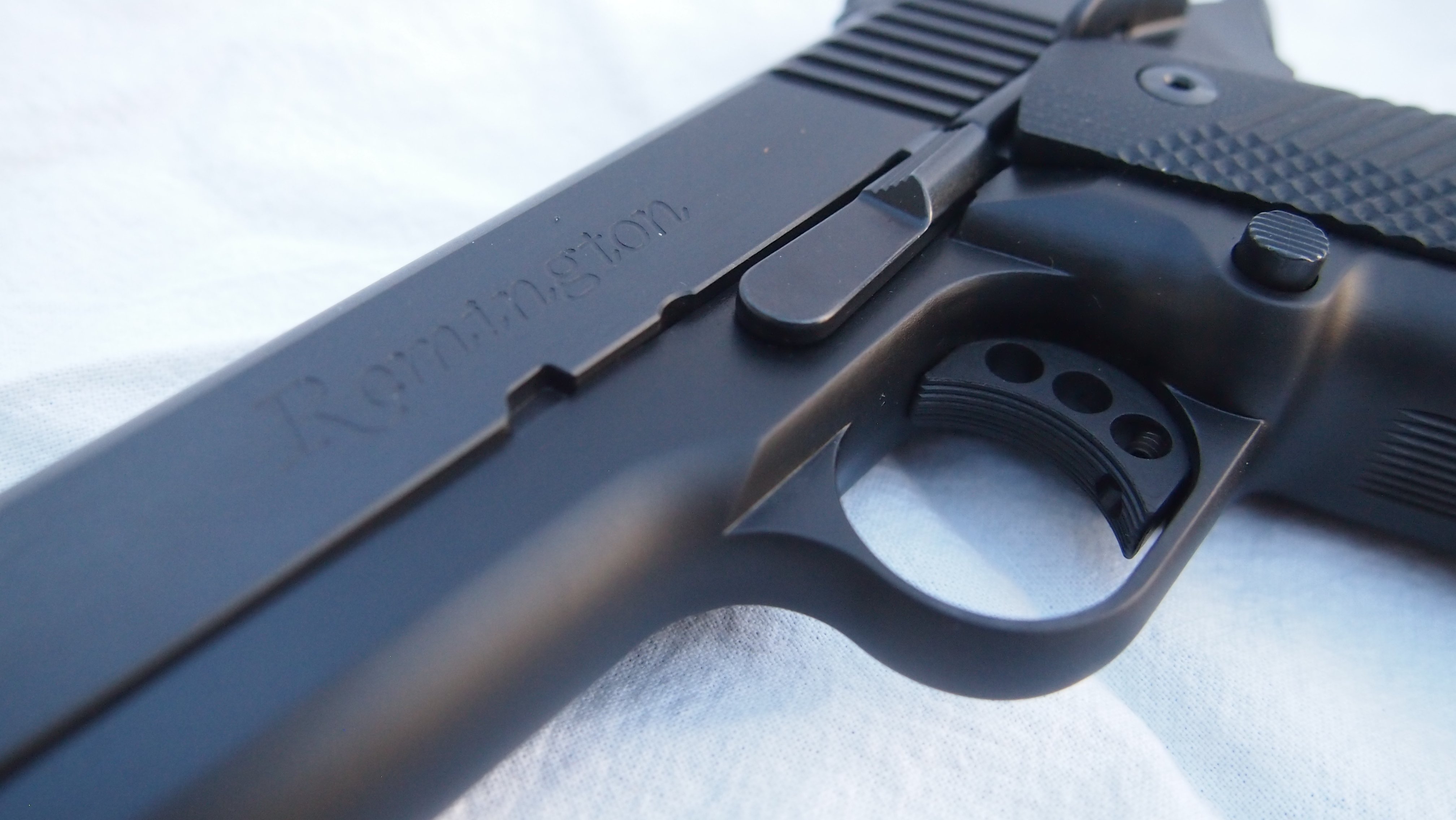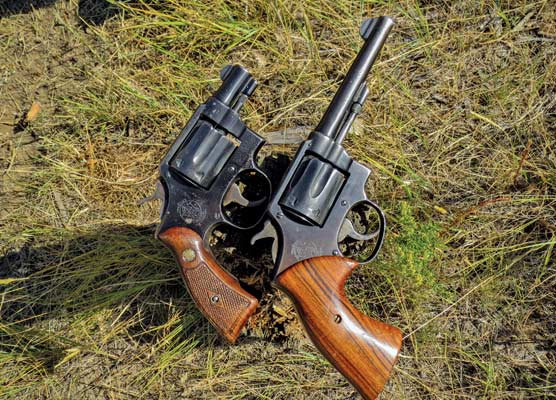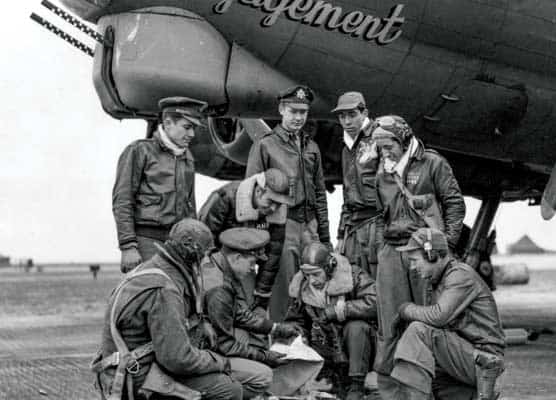The Double(stack) Life: the Case for Carrying a Bigger 1911
There is a reason for the proliferation of striker-fired handguns in the law enforcement and military communities: capacity As its name suggests, the Glock 17 holds 17 rounds in its magazine plus-one chambered, granting gun owners a whopping 18 rounds at their disposal should a self-defense situation arise. In contrast the average 1911 holds only seven rounds per standard magazine; even including plus-one chambered, the guy carrying a classic 1911 has just eight rounds. This is the moment at which 1911 fans mention the importance of carrying spare magazines and the value of shot placement, both of which are valid points. However, there is another answer to the age-old capacity argument: double-stack 1911s.
Enter a couple newcomers to the double-stack 1911 world: the Remington R1 Enhanced in .45 ACP and Tomasie Custom in .40 S&W. I spent a week at Gunsite Academy in Paulsen, Arizona running both pistols with special attention to the Enhanced’s performance in the shoot house. Back home I ran both guns extensively, carrying the Enhanced in .45 ACP to find out just how viable an option a double-stack 1911 is not only for open carry but concealed carry. The verdict is in: not only is it a reliable, accurate pistol, it can – and should – be carried.
In action at low ready while training at Gunsite Academy
Defend Yourself
“Shot placement!” is the mantra at almost every firearms academy and range across the country. And although it is true – you should train for precise placement and consistent grouping – it does not always take adrenaline into consideration. Shooting at static targets at 10 yards day in, day out does wonders for your ability to shoot under no stress at paper that doesn’t move an inch. Shooting at moving targets, especially when they’re attached to a Gnat Warfare moving ground target and rolling right at you, is something else entirely. Add in an instructor at your back and a crowd of closely-watching fellow shooters and your adrenaline begins to climb. As the adrenaline dump takes effect – heart pounding, hands shaking, lungs rapidly expanding – guess what happens? You miss.
Repeated runs through shoot houses at different locations around the country have taught me something vital: there is always more to learn. Your skills continually need honing, adrenaline constantly needs to be mastered, and there are countless tactics and techniques to train with. Training takes significant time, not just one weekend one time in your life or even once a year. By all means, train. Train as though your life depends on it, because one day it might. But be realistic. You are human, you are fallible, and no one knows how they will react or perform during a life-threatening assault until it happens. And in that moment, when an unpredictable assailant crazed by rage and possible booster from drugs comes at you with nothing to lose, you will not magically gain abilities or skills. You will have only the skills you have worked for and even those will be noticeably blunted by the stress of the moment.
Like most 1911’s, the Remington rides well and draws cleanly.
“You’re Dead.”
There I was, halfway through a shoot house, working my corners and methodically clearing rooms. This particular shoot house included “no shoot” targets of completely innocent bystanders and also hostage takers with innocents blocking everything but the side of the bad guy’s head. It was as I began cautiously pie-ing off what I was beginning to believe was an empty doorway that I realized there was, indeed, a bad guy target in the corner of the narrow hallway with a handgun aimed right at me. I squeezed my single-stack 1911’s trigger, discovered a dry gun despite the slide remaining forward, and heard the expected words from the instructor at my back: “You’re dead.”
Do not hesitate. Keep shooting until the threat stops coming – wait, you only have eight rounds and your gun just ran dry? You didn’t practice tactical reloads to ensure your gun won’t run dry at an inopportune moment? Yes, of course it is possible to run dry on a double-stack magazine, but there is much to be gained from having a 15-round magazine versus eight. Give yourself every possible advantage. As John Steinbeck once accurately stated, “If you find yourself in a fair fight, your tactics suck.” That’s what a double-stack 1911 does: it quite literally stacks the odds in your favor. That is what I want from my carry gun: an unfair advantage.
The Remington R1 Enhanced Double-Stack comes with a red fiber-optic front sight which significantly aids in rapid target acquisition.
Getting A Grip
Yet another argument used to claim the 1911 makes an inadequate carry gun has to do with firing grip. It’s true that the safeties are significantly different between a Glock and the Remington R1; the Glock relies on internal safeties while the R1 Enhanced features the classic 1911 external thumb safety and beavertail grip safety. Glocks, it is argued, can easily be fired with one hand while the 1911 grip safety makes it almost impossible to do so. Should you fail to engage the grip firmly enough, they say, you are doomed to “click, no bang” and the disaster to follow.
It certainly would be bad news to be down to only one usable hand – strong or support side – and find yourself unable to make your gun fire. However, I haven’t found it to be a 191-specific problem. Running various 1911 models from numerous manufacturers both two-handed and one-handed – using each hand – I’ve found it’s quite easy, really, to fire a 1911 regardless of single-or-double grip circumstances. Reality is you need a solid firing grip on any gun you use; if you think limp-wristing a Glock is okay because there’s no grip safety, you’ll find you’re quite mistaken. It all boils down to the same thing, though: training. Hitting the range a few times a year and going through a single fifty-round box of ammunition won’t get you far. Consistent training – and, yes, luck – is what will get you through an attack.
Remington R1 Tomasie Custom Double-Stack in .40 S&W
If you want to drop an attacker quickly, take a well-aimed head shot. A cranial hit is the fastest way to stop a threat but becomes increasingly difficult to execute as your adrenaline soars. There is a reason the majority of self-defense instructors teach students to aim for center mass. Not only is center mass a larger target in the general sense, it’s easier to hit while moving and contains all manner of vital zones from arteries to organs. Training to take and make head shots is certainly ideal but it’s practical for most shooters to train for center mass first and foremost.
Whether the problem is jerking the trigger or failing to get a good sight picture, missed shots happen. And when you’re defending your life or the lives of loved ones the resulting adrenaline all but guarantees less-than-perfect results. Your assailant will neither hold still nor arrive on the scene wearing a skintight shirt printed with carefully outlined vital zones. Tip the odds in your favor by training and being realistic about not only your abilities but the side effects of adrenaline and strong emotions.
Backup
The idea of spare magazines and backup guns is good common sense but it isn’t always realistic. Under pressure – not to mention time constraints of someone else’s making – you may forget to reload quickly enough or be unable to go for your backup gun. To take it a step further, consider this: you’re at home and someone breaks in. Your 1911 is ready and waiting but you’re in pajamas with no place to stuff a spare magazine or backup gun. Time is of the essence and you are forced to rely on the single magazine loaded in your gun. How many rounds do you have? Seven? Eight? I bet you’re wishing for fifteen.
You will not always have access to a spare magazine. We all want to have one and in a best-case scenario we will not only have spare magazines but not even need them because the first shot or two will stop the threat. Real life is different.
Double-stack 1911s negate the old “1911s have subpar capacity” argument thanks to 15-round magazines, plus one chambered.
Reliability
What is the number one feature required in a carry gun? I’ll give you a hint: it isn’t a cool Cerakote finish or a green laser. It’s reliability. Your carry gun must go bang every time you squeeze the trigger. Accuracy, while important, comes in second to reliability; accuracy does you no good if the bullet never leaves the barrel. Whether you carry a single-stack 1911 or double-stack striker-fired handgun, it must perform when a dire threat to your life takes place.
Although I can’t vouch for every gun on the market, I can speak specifically to the performance of the new double-stack Remington R1 Enhanced in .45 ACP. The Enhanced has proven itself, thus far, through thousands of rounds. Rapid-fire, Mozambique drills, one-handed shooting – you name it, the Enhanced has done it, and done it well. Even better, it’s proven itself reliable eating a variety of defense rounds including Hornady Critical Duty 220 grain Flexlock, Barnes TAC-XPD 185 grain HP, and Polycase Inceptor 114 grain ARX. It also can and does burn through target rounds such as Fiocchi 230 grain FMJ and Browning BPT 230 grain FMJ. The Enhanced likes to eat, making it a preferred gun in my book.
Are there instances necessitating deep concealment where a full-size handgun of any type would be ill-advised? Absolutely. But when the situation allows – and you will find many circumstances do allow it – you would be better served strapping on a fifteen-plus-one 1911 than one with significantly less capacity.
Concealment
Ease of concealment is yet another negative point made against larger handguns. After all, when your slim single-stack grip expands for double-stack capacity, isn’t significant bulk gained? No. In the case of the Enhanced there is less than two-tenths of one inch difference in overall width between the two models. If you can conceal a single-stack 1911, you can manage a double-stack. Concerned about concealing any 1911 regardless of capacity? Consider the following.
At 5’9”, barefoot, I’m tall but still shorter than most guys. As a woman, my curves tend to create more challenges to concealing handguns rather than serving as some sort of cloak of firearm invisibility. With a quality holster – I’m partial to leather OWB/AIWB holsters such as those handmade by Rob Leahy of Simply Rugged Holsters – and a sturdy belt I’m capable of concealing a 1911, and not only during the winter when sweatshirts and bulky jackets become daily accessories. In fact, as I write this I’m carrying the double-stack Enhanced in question with a shirt from a different manufacturer – oh the horror –woven of relatively thin cloth. Yes, you’ll probably need to make some adjustments to your wardrobe, but it can be done. This is the question I typically ask of those wishing to carry concealed: which item of clothing currently hanging in your closet is worth your life? It’s not an extreme question at all, it’s hard reality.
The magazine release button on the Enhanced Double-Stack is both raised and textured for ease-of-use and faster operation.
Mine
If you ask me why I carry it would be easy enough to give a rote answer. Possibilities range from wanting to feel safe, needing the so-called equalizer of size and strength, and habit. There are the politically correct responses, the carefully-crafter gun writer replies, and more. But when it comes right down to it, the answer is simple. Years ago the cold, hard reality of life slapped me down hard and I realized I wanted my daughter safe. I, too, wanted to live, but I wanted to be capable of standing my ground in front of my daughter. Many gun owners who carry daily have had a “come to Jesus” moment and simply wish to be prepared should the potentially-lethal moment present itself again.
Carry your gun. Carry daily. And if I may make a suggestion, carry a double-stack 1911. Keep the fight unfairly tipped in your favor.









